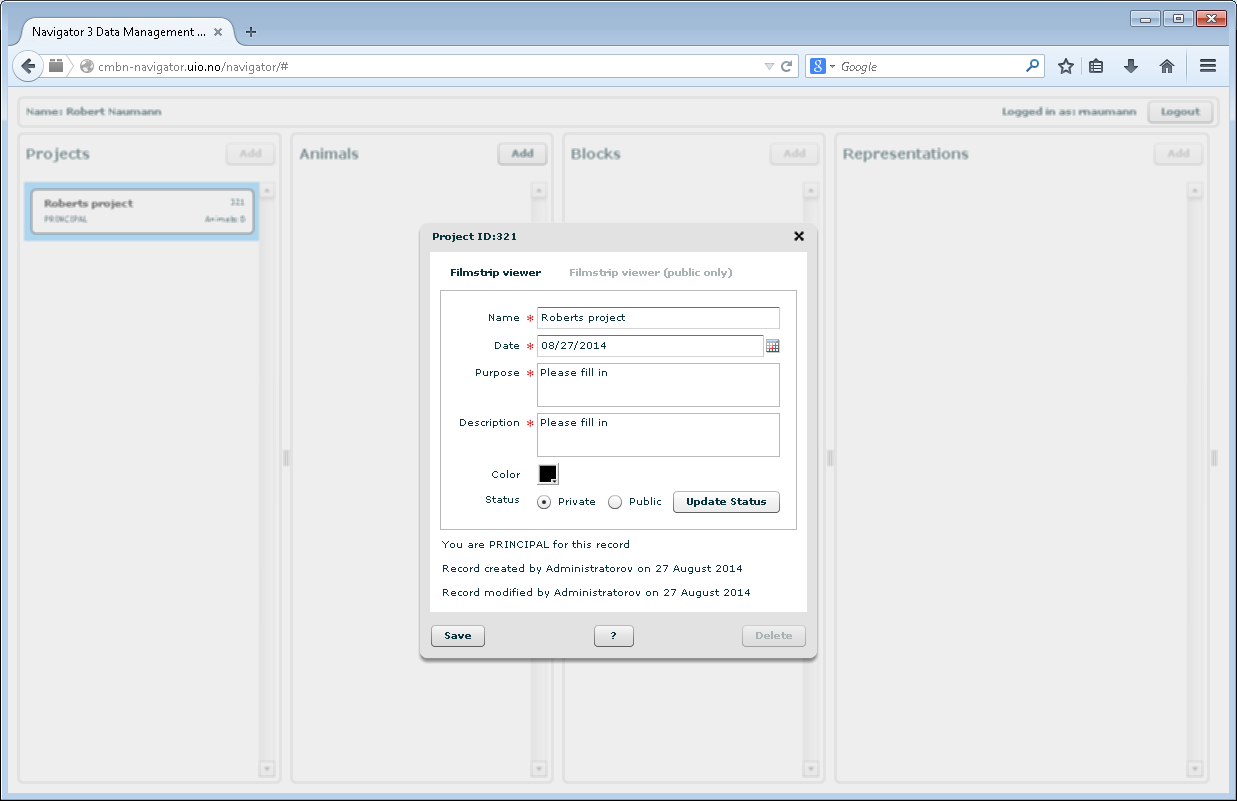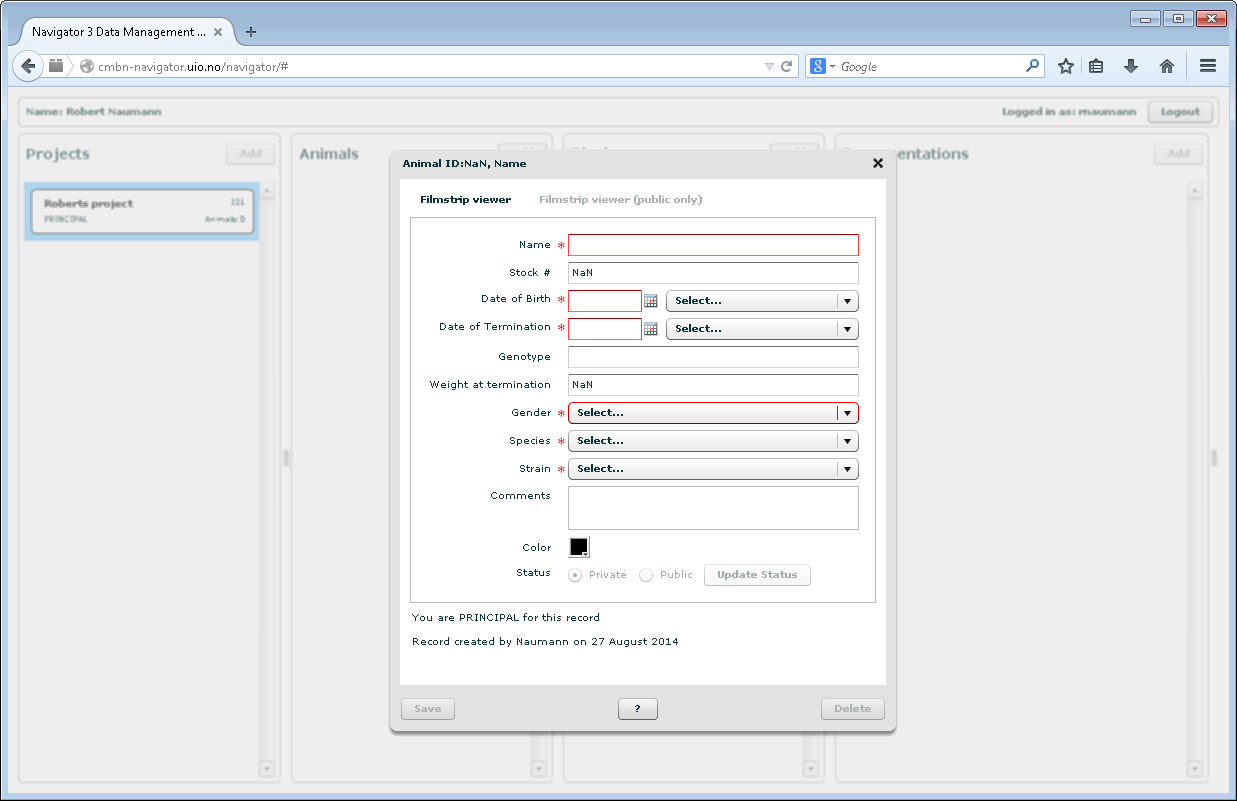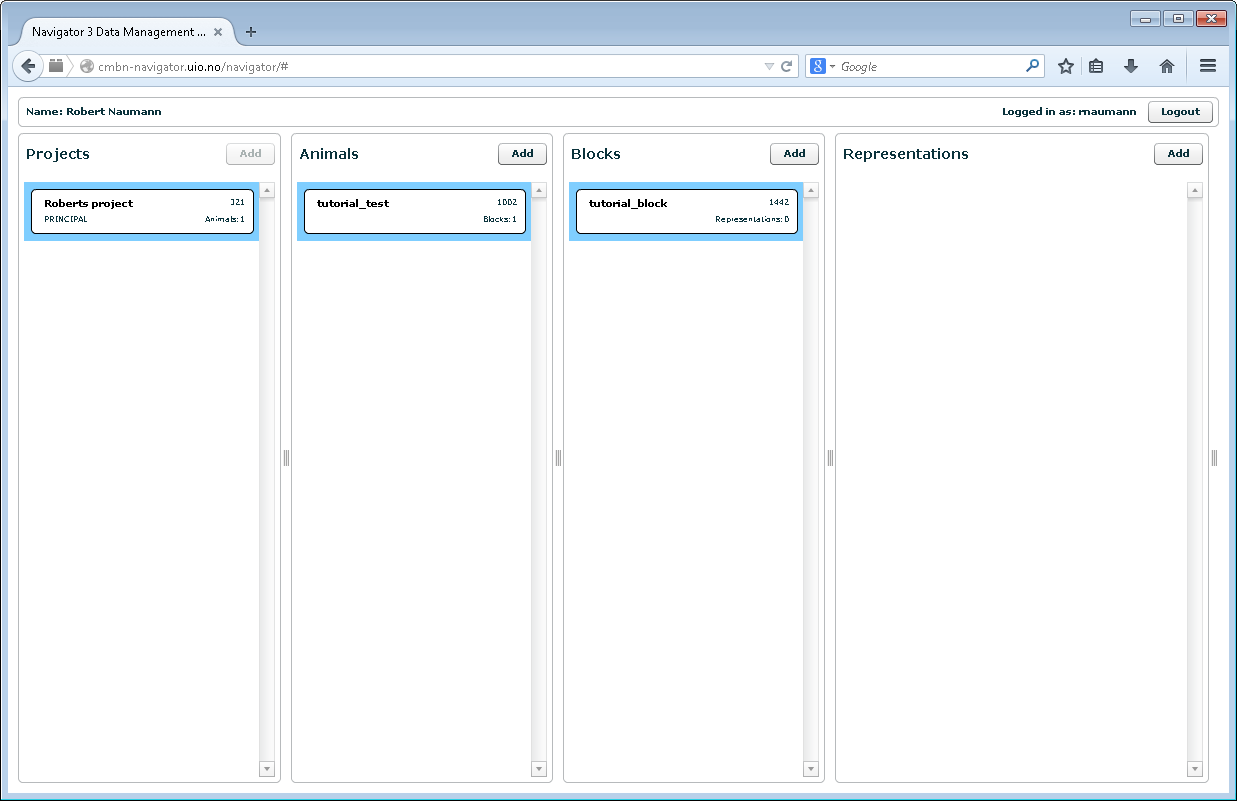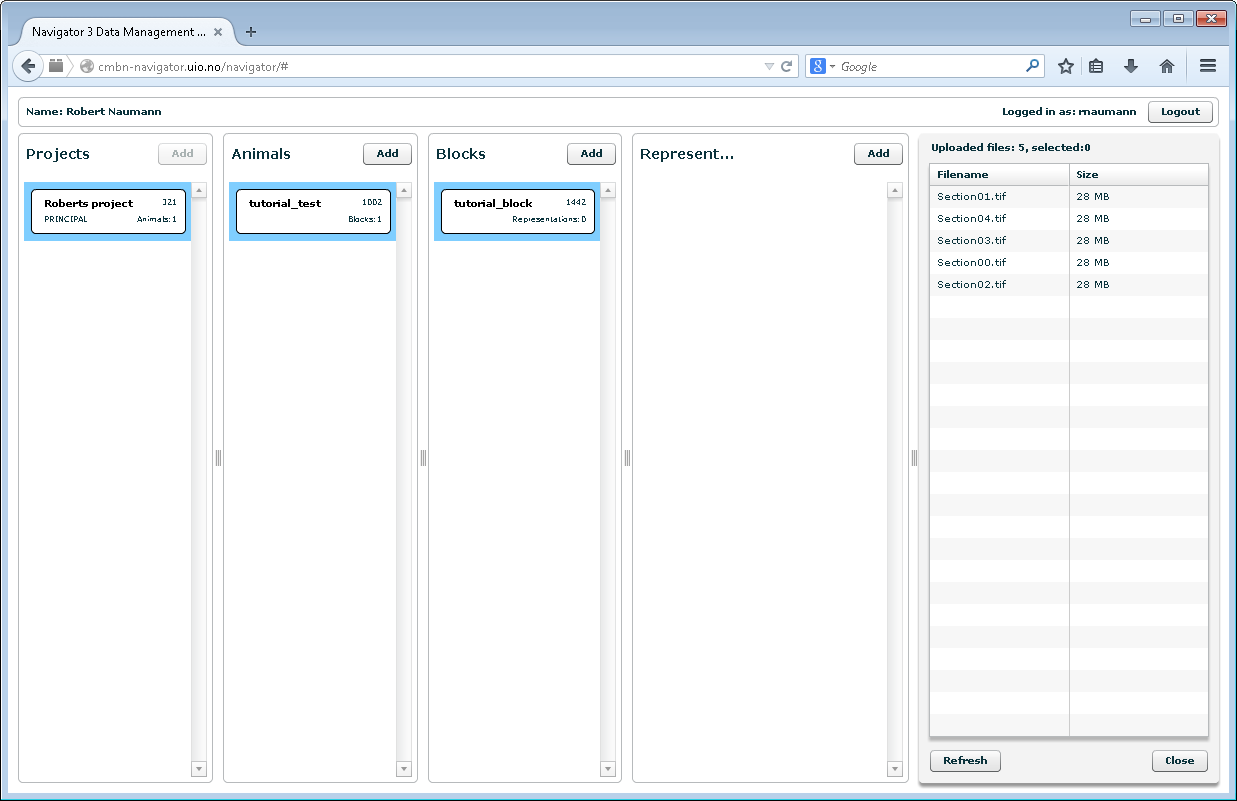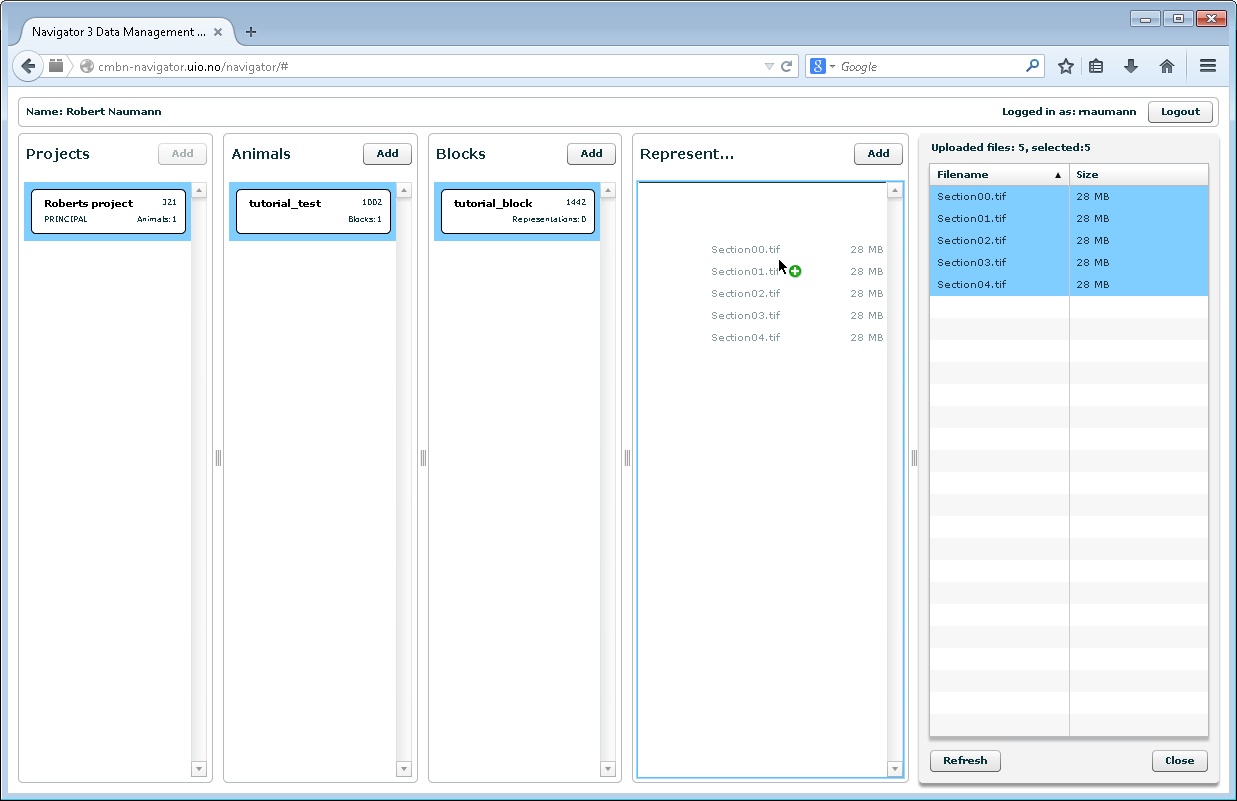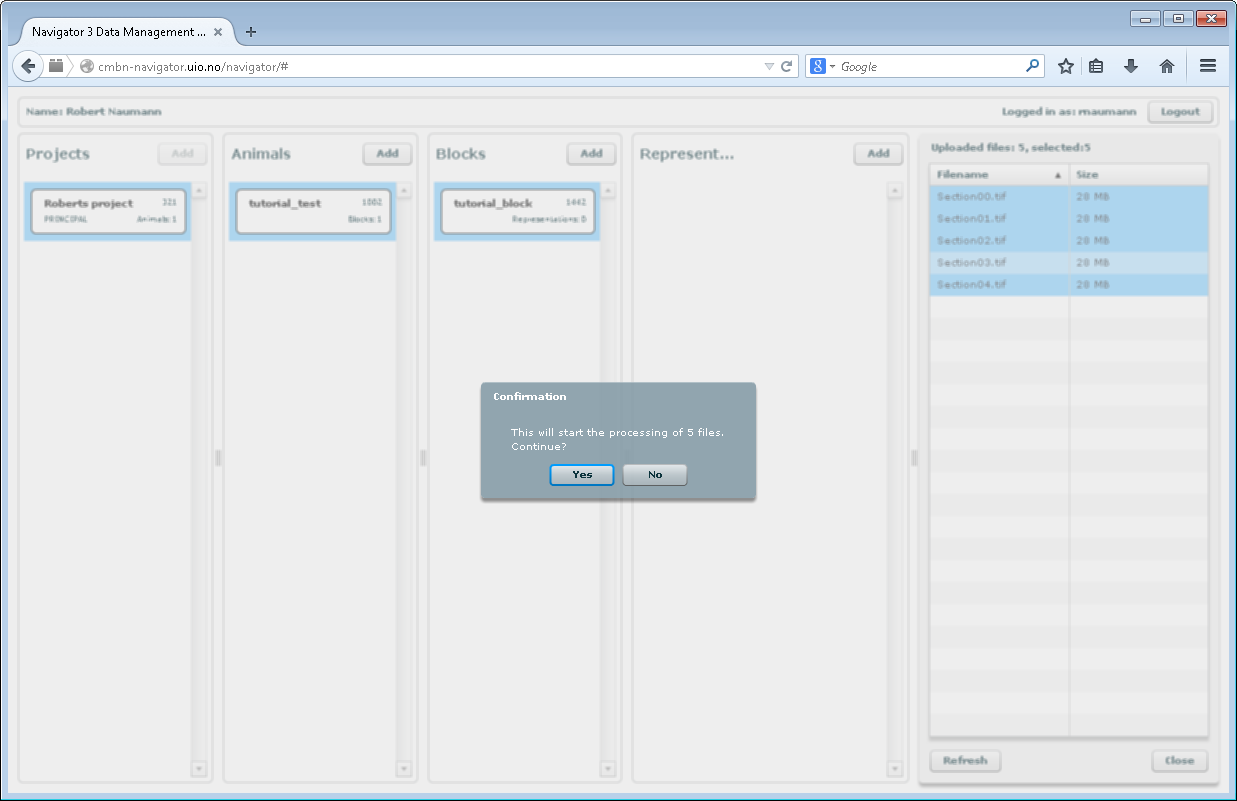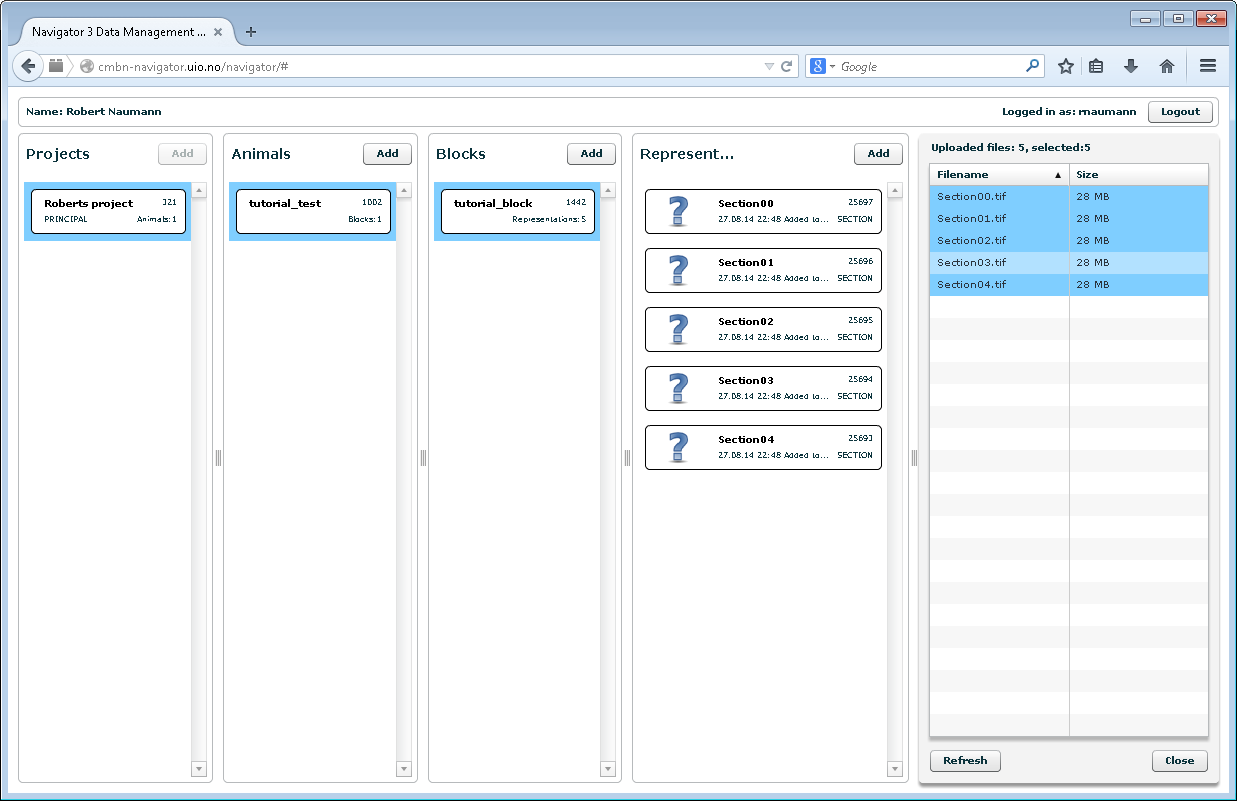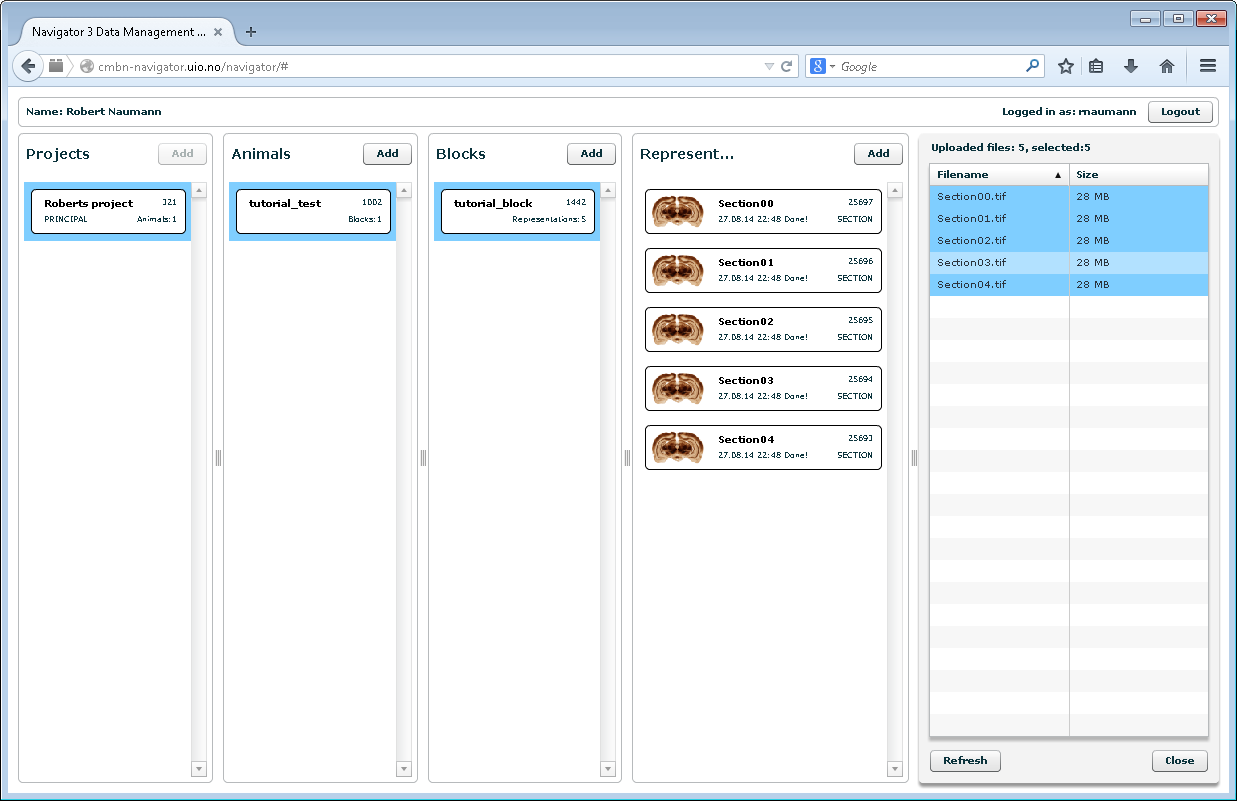Difference between revisions of "Data input tutorial"
| Line 47: | Line 47: | ||
That’s it – your images are stored in N3. Things you get right out of the box: | That’s it – your images are stored in N3. Things you get right out of the box: | ||
| − | #High (virtually unlimited) resolution viewer. Double click on one of the Representation nodes and click OpenZoom button:<br/> | + | #High (virtually unlimited) resolution viewer. Double click on one of the Representation nodes and click OpenZoom button:<br/>[[File:Image011.png]]<br/>It will open the viewer (use mouse (click, drag, wheel) to navigate):<br/>zzzzzzzzzzzzzzzzzzzzzzzzzz |
| − | #Film strip viewer. It’s available from Block node (double-click on a block to open the window):<br/> | + | #Film strip viewer. It’s available from Block node (double-click on a block to open the window):<br/>[[File:Image012.png]]<br/>The filmstrip viewer shows all the Representations belonging to the Block (similar to files in a folder):<br/>[[File:Image013.png]] |
'''Note that you can copy viewers URLs and share them (email, skype etc.) without accessing the main data management interface.''' The recipients have to authenticate to access them (I can create more accounts for your project). | '''Note that you can copy viewers URLs and share them (email, skype etc.) without accessing the main data management interface.''' The recipients have to authenticate to access them (I can create more accounts for your project). | ||
Revision as of 16:31, 12 December 2014
The first step is to upload the files using any FTP client (e.g. FileZilla) to your personal temporary folder, the URL is ftp://cmbn-navigator.uio.no:2121
Note the non-standard port number: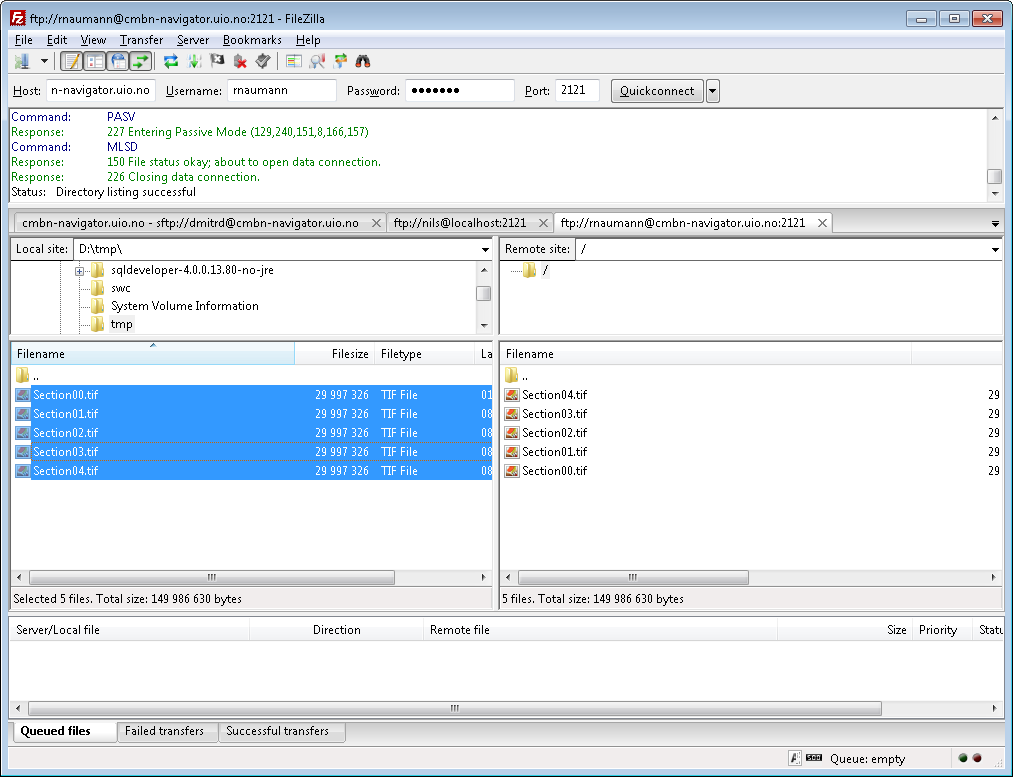
After the upload is finished you can login into the main data management interface: http://cmbn-navigator.uio.no/navigator/ You should see your project there. Please double-click on the project node and rename it/add metadata:
Click Save button
Now you are ready to create the Animal. Click Add button in the Animals column. You should see this:
Please provide the info, the red fields are mandatory. Click Save button. Select the created node by clicking on it:
The similar way you create the Block – click on Add button in the Block column, fill in the info, click Save button and select the created Block node:
Once the Block node is selected click Add button in the Representations columns. This button will open a panel with the files you’ve uploaded via FTP:
Select the files and drag’n’drop them to the Representation column:
Click Yes. The processing might be a time consuming task. After it has started you can close the browser and login later to check the progress:
After some time the processing is finished:
That’s it – your images are stored in N3. Things you get right out of the box:
- High (virtually unlimited) resolution viewer. Double click on one of the Representation nodes and click OpenZoom button:
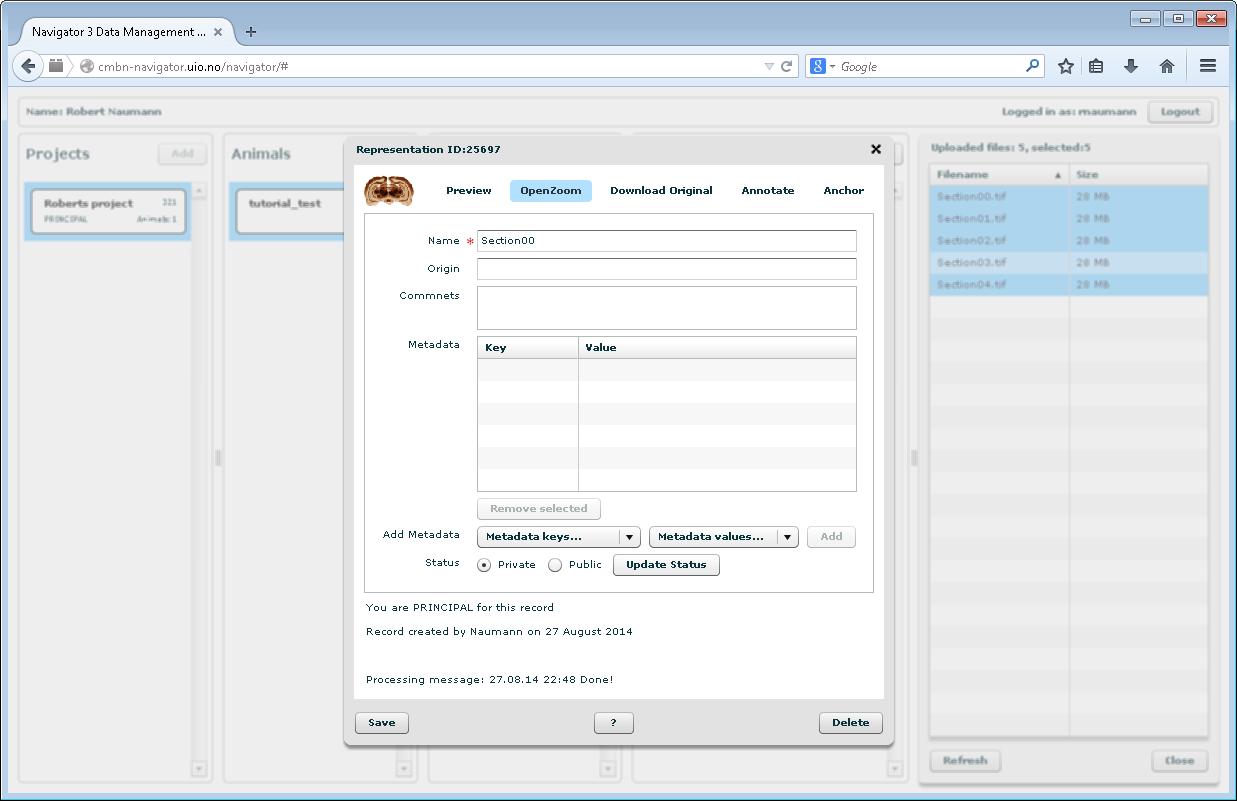
It will open the viewer (use mouse (click, drag, wheel) to navigate):
zzzzzzzzzzzzzzzzzzzzzzzzzz - Film strip viewer. It’s available from Block node (double-click on a block to open the window):
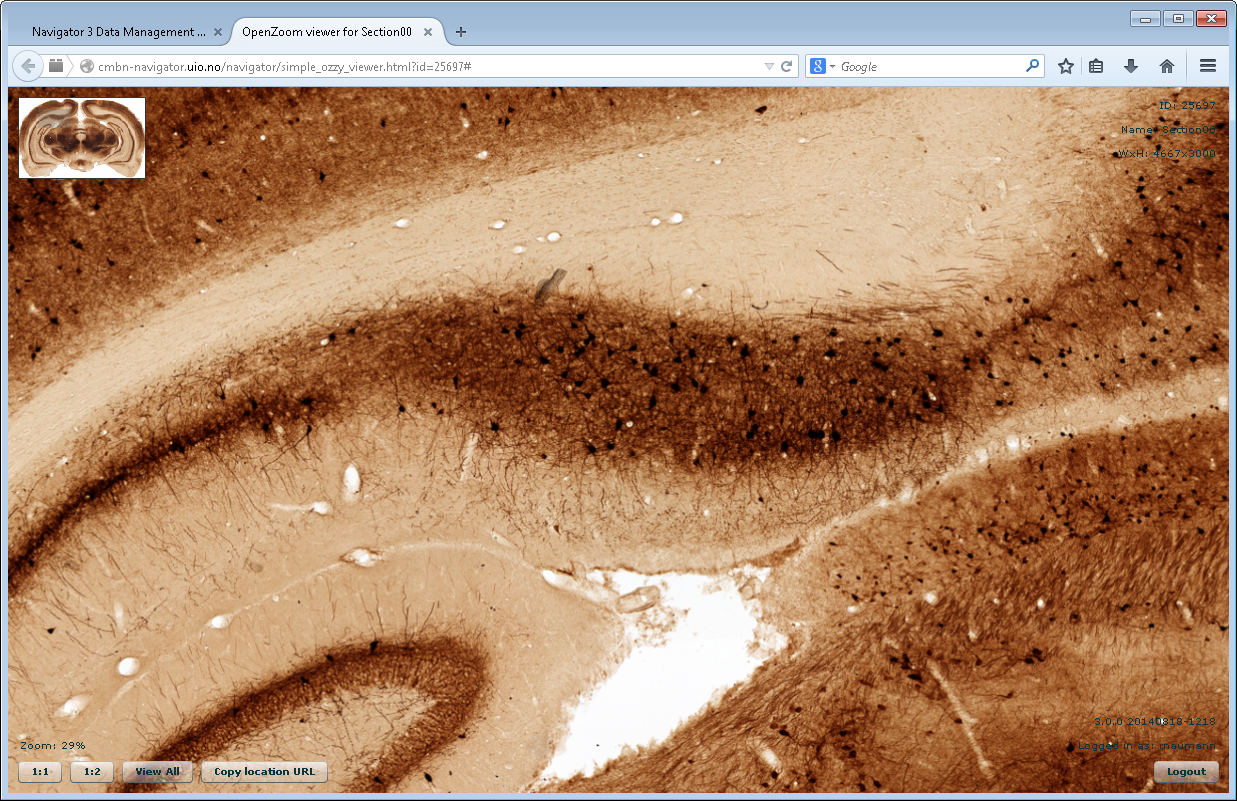
The filmstrip viewer shows all the Representations belonging to the Block (similar to files in a folder):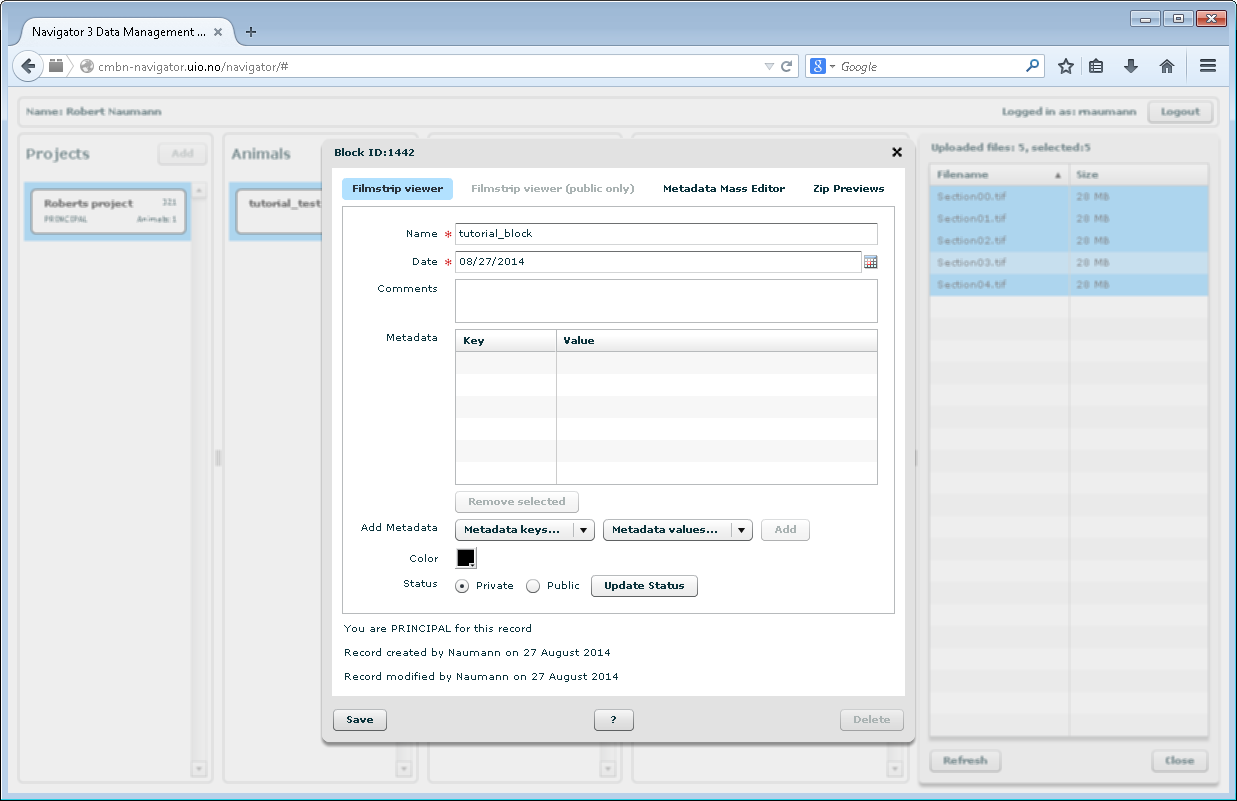
Note that you can copy viewers URLs and share them (email, skype etc.) without accessing the main data management interface. The recipients have to authenticate to access them (I can create more accounts for your project).
These are the basic tools. There are more of them: the annotation tool – make drawings (SVG) directly on high resolution images, the metadata mass editor tool – add various metadata to the images, the anchoring tool – anchor (position) an image in 3D atlas space.
